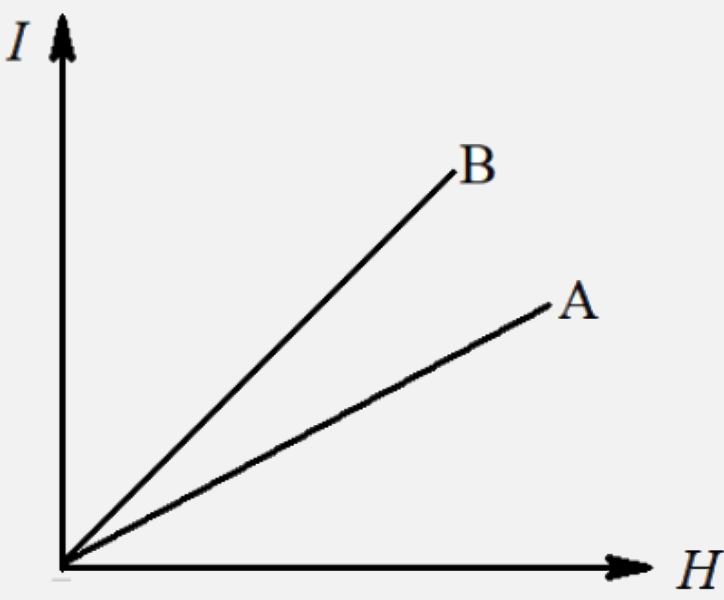How will you show that magnetic force can pass through non-magnetic materials?
To show that magnetic force can pass through non-magnetic materials, we can conduct a simple experiment using common items. Here’s a step-by-step solution to demonstrate this concept:
1. Gather Materials:
- Collect a ring magnet (or any strong magnet).
- Gather non-magnetic materials such as a cardboard sheet, a wooden stick, and some nails.
2. Setup the Experiment:
- Place the cardboard sheet on a flat surface.
- Lay the wooden stick on top of the cardboard sheet.
- Ensure that the wooden stick is positioned horizontally.
3. Position the Nails:
- Take a few nails and place them on the surface of the cardboard, spaced out evenly.
4. Place the Magnet:
- Hold the ring magnet underneath the cardboard sheet, directly below the nails. Ensure that the magnet is not touching the cardboard.
5. Observe the Effect:
- Slowly move the magnet around under the cardboard and observe the nails. You should see that the nails begin to move towards the position of the magnet, even though they are separated by the cardboard and wooden stick.
6. Conclusion:
- This observation shows that the magnetic force from the magnet can pass through the non-magnetic materials (cardboard and wood) and still attract the nails. Thus, we can conclude that magnetic force can indeed pass through non-magnetic materials.
- Collect a ring magnet (or any strong magnet).
- Gather non-magnetic materials such as a cardboard sheet, a wooden stick, and some nails.
- Place the cardboard sheet on a flat surface.
- Lay the wooden stick on top of the cardboard sheet.
- Ensure that the wooden stick is positioned horizontally.
- Take a few nails and place them on the surface of the cardboard, spaced out evenly.
- Hold the ring magnet underneath the cardboard sheet, directly below the nails. Ensure that the magnet is not touching the cardboard.
- Slowly move the magnet around under the cardboard and observe the nails. You should see that the nails begin to move towards the position of the magnet, even though they are separated by the cardboard and wooden stick.
- This observation shows that the magnetic force from the magnet can pass through the non-magnetic materials (cardboard and wood) and still attract the nails. Thus, we can conclude that magnetic force can indeed pass through non-magnetic materials.
Topper's Solved these Questions
- MAGNETISMBOOK - ICSECHAPTER - MAGNETISMEXERCISE - Exercises (Section II) Long answer questions
4 Videos
- MAGNETISMBOOK - ICSECHAPTER - MAGNETISMEXERCISE - Picture Based Questions
12 Videos
- MAGNETISMBOOK - ICSECHAPTER - MAGNETISMEXERCISE - Exercises (Section II) Distinguish between the following .
6 Videos
- LIGHTBOOK - ICSECHAPTER - LIGHTEXERCISE - Picture Based Questions
21 Videos
- MATTERBOOK - ICSECHAPTER - MATTEREXERCISE - Picture Based Questions
2 Videos
Similar Questions
Knowledge Check
Assertion" When diamagnetic material is placed in a non-uniform magnetic Held, it tends to move from stronger to the weaker part of the magnetic field.
Reason: Diamagnetic materials possess strong magnetism.AIf both assertion and reason are true and reason is the correct explanation of assertion.BIf both assertion and reason are true and reason is not the correct explanation of assertion.CIf assertion is ture but reason is false.DIf both assertion and reason are false.
Magnetic force ................ (can/cannot) pass through non-magnetic materials.
View SolutionAll metals are magnetic materials.
View SolutionFerromagnetic material and non-magnetic material
View SolutionS is the surface of a lump of magnetic material.
View SolutionAll these magnetic materials loss their magnetic properties when
View SolutionThe following figure shows the variation of intensity of magnetisation I versus the applied magnetic field intensity H, for two magnetic materials A and B

Which of the material have a larger susceptibility for a given field at constant temperature?
View SolutionHow will you show that non-stoichiometic solium chloride is yellow ?
View Solution

